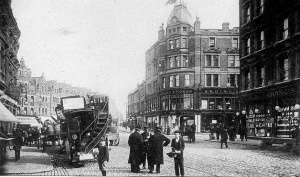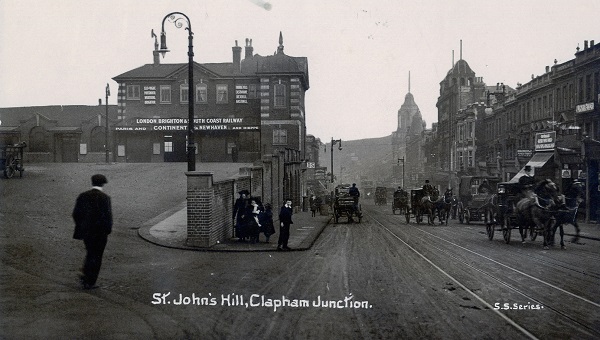The latest Council’s Press Release has got a very interesting article about Clapham Junction History with a series of old photos that we will display here (hopefully there is no copyright infringement).
The article starts in 1856, when three railway companies who each had trains running through the area got together to build a station at the junction of several lines.
 It allows us to praise the work done when they refurbished Brighton Yard a decade ago: with one hundred years distance, a traveler from the past won’t be disoriented.
It allows us to praise the work done when they refurbished Brighton Yard a decade ago: with one hundred years distance, a traveler from the past won’t be disoriented.
It says:
“It is likely that the Clapham part of the name was an attempt to appeal to upper class passengers, as it sounded posher than Battersea Junction. However, this bit of marketing has led to decades of confusion, with many people, including local shops, convinced they are in Clapham, more than a mile down the road.”
The Falcon pub, reputed to have the longest bar counter in the UK, very noticeable at one corner of Falcon Road and St Johns Hill, has changed completely after its rebuilt in brick by the then landlord John Alder.
We dedicated an entire article eight years ago about the changes that occured in Clapham Junction between 1745 and 2011.
Prior to the construction of the first railway line in 1838 the area was mostly fields with the exception of a few buildings along St John’s Road with the old Falcon Brook behind them. According to Wikipedia, The Manor of Battersea was owned from about 1613 to 1763 by the St John baronets, of Lydiard Tregoze, who latterly became the Bolingbroke Viscounts. Their family armorial bearings were a a pair of golden falcons displaying their wings.
The 1838 tithe map shows the area immediately prior to the construction of the London to Southampton railway, the route of which is demarcated on the map.

but as yet undeveloped. Amongst the small number of
country villas shown is the Chestnuts on Lavender Hill (not
labelled), a house that has been much altered but of which
the remnants survive amongst the terrace housing on
Mossbury Road (outside CA)
You will find the story of the railway in our previous article, but let’s remember that the London and South Western Railway (LSWR) decided to build a new station at Falcon Bridge in 1863.
 A new Wetherspoon pub has recently opened in Clapham Junction and pays tribute to the first railway with its name, as we told you in our article about the new pub replacing Revolution at the Junction.
A new Wetherspoon pub has recently opened in Clapham Junction and pays tribute to the first railway with its name, as we told you in our article about the new pub replacing Revolution at the Junction.
The early housing was mainly for low-income families associated with the local workforce. But in the 1870s and 1880s the area around The Falcon was developed into the terraced-house streetscape which remains to current times. The developer Alfred Heaver made an enormous impact on the Battersea townscape with the construction of some 4,419 houses in the area between 1878 and 1898. Between 1840 and 1910, the population increased from 6,000 to 168,000!

Arding and Hobbs opened in 1884, confirming the attraction for the area. A fire destroyed the building in 1909, which was replaced by the current much grander structure. And – via a few years trading as Allders, before being taken over by Debenhams – it’s been with us ever since. A plan has recently been confirmed to transform the building mostly into offices.
It is also possible to see clues of the glory of the building in The Human League’s ‘Life On Your Own’ video (from 2:08):
And some of you might remember the Arding & Hobbs advert in 1986:
The future of Clapham Junction in the next 30 years is likely to change again drastically, to an extend that could match the transformation made by developer developer Alfred Heaver in the late 19th century, with the Council controversial plans to build a series of skyscrapers (up to 32 storeys) in their Winstanley and York Road regeneration scheme, and the possible plan from Network Rail to redevelop the station with residential building.
You can count on us to keep a close eye on those events.
- You can find more information about the Clapham Junction BID (business improvement district) on this website and in one of our article.
- You will find information on the Clapham Junction Area Strategy in the Wandsworth Local Plan on the Council’s website.















